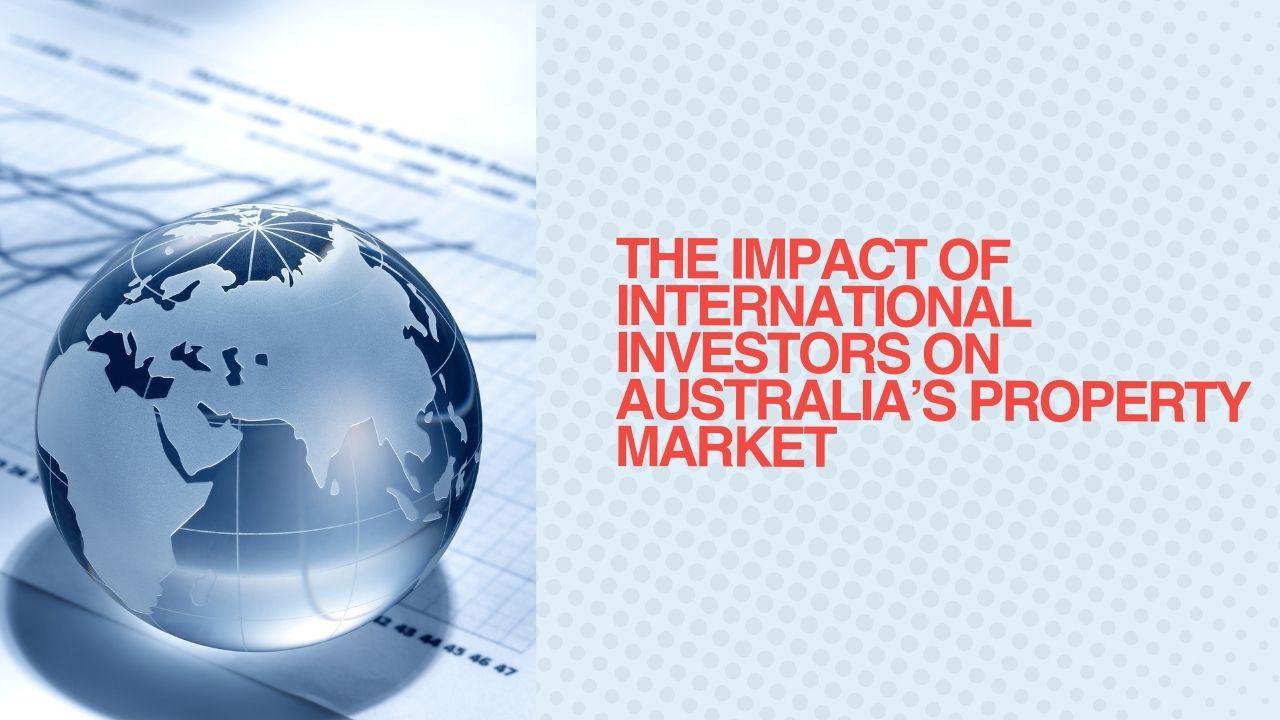The Impact of International Investors on Australia’s Property Market
- January 21, 2025

The role of international investors in Australia’s property market has long been a topic of debate. While some argue that foreign investment drives up property prices, data from the Australian Bureau of Statistics (ABS) and CoreLogic suggests a more nuanced picture. This blog delves into the significant impact of international investors on housing supply, affordability, and the broader property ecosystem.
Foreign Investment in Australian Real Estate: The Rules
Foreign investors in Australia face strict regulations. They are prohibited from purchasing established homes and can only invest in new developments or vacant land for residential construction. Additionally, they must seek approval from the Foreign Investment Review Board (FIRB). In 2022, FIRB approved only 1,300 purchases of established homes by foreign buyers, representing a fraction of the 500,000 homes sold nationwide. This data underscores that foreign investors primarily contribute to new housing supply rather than competing with local buyers for existing properties.
The Decline of Foreign Investment: A Missed Opportunity
The 2015-2016 Boom
During the 2015-2016 property cycle, foreign investment played a pivotal role in boosting Australia’s housing supply. Cities like Sydney, Melbourne, and Brisbane saw significant growth in apartment construction, driven by overseas capital. Developers often relied on foreign investors to meet the critical pre-sale requirements needed to secure project financing.
Policy Changes and Their Impact
Over the past decade, federal and state governments introduced additional taxes and restrictions on foreign investment. For instance:
- New South Wales and Queensland have imposed stamp duty surcharges and land tax hikes on foreign buyers.
- National policies have further limited foreign ownership of new properties.
While these measures were aimed at addressing housing affordability, they have inadvertently contributed to a sharp decline in new housing construction. Data from CoreLogic reveals that apartment commencements have halved since their peak in 2015-2016. This downturn is directly linked to the reduction in foreign investment.
Supply and Demand Imbalance
Australia is currently experiencing a housing supply crisis. According to ABS, net overseas migration is projected to exceed 550,000 people annually for the next two years. Migrants typically settle in metropolitan apartments during their first 1 to 7 years in Australia. However, the current rate of apartment construction is insufficient to meet this demand.
Key Statistics:
- Apartment construction in 2023 was 50% lower than in 2015, as per CoreLogic data.
- Developers now require 80-90% pre-sales to secure funding, a significant increase from earlier thresholds.
This vicious cycle has created a bottleneck. Without foreign investors to meet pre-sale quotas, many projects remain stalled, further exacerbating the housing shortage.
The Economic Contribution of Foreign Investment
Foreign investors do more than just finance apartment developments. They contribute significantly to the economy through:
- Job Creation: Construction projects supported by foreign capital provide employment for thousands of Australians.
- Tax Revenue: Stamp duties and other taxes paid by foreign investors bolster state and federal budgets.
- Increased Housing Supply: By enabling large-scale developments, foreign investment indirectly alleviates pressure on housing affordability.
Addressing Misconceptions
One common misconception is that foreign buyers drive up property prices. However, FIRB’s strict regulations prevent them from competing in the established housing market. Instead, their investments are critical for increasing the supply of new homes. Policies targeting foreign investors often play into unfounded fears, ignoring the broader economic benefits.
A Path Forward: Balancing Policy and Demand
Australia needs a balanced approach to foreign investment that recognises its importance in addressing the housing crisis. Key policy recommendations include:
- Reducing Taxes on Foreign Investors: Revisiting stamp duty surcharges and land tax increases to attract more overseas capital.
- Encouraging Institutional Investment: Incentivising foreign banks and superannuation funds to invest in large-scale residential projects.
- Streamlining Approval Processes: Simplifying FIRB procedures to encourage timely investments in new housing developments.
The Role of Property Dollar in Tracking Market Trends
For investors navigating Australia’s dynamic property market, tools like the Property Dollar app are invaluable. The app provides real-time insights into property trends, tracks portfolio performance, and highlights opportunities for growth. Whether you’re an international or local investor, Property Dollar equips you with the data-driven insights needed to make informed decisions.
Conclusion
Foreign investment in Australia’s property market is not a threat but a vital driver of housing supply and economic growth. Restrictive policies have slowed apartment construction, exacerbating the current housing shortage. By welcoming international investors and fostering a balanced policy environment, Australia can build the 1.2 million homes needed to meet demand.
Take control of your investment journey with the Property Dollar app. Download today to stay ahead of market trends and make smarter property decisions.
Disclaimer: The information provided in this blog is general in nature and not intended to be personalized financial advice. Please consult a financial advisor before making any decisions regarding your finances.




